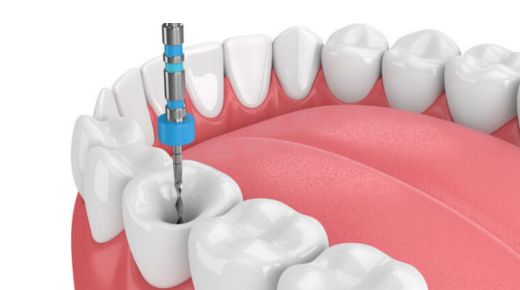
Many patients experience extreme anxiety when their dentist tells them about root canal therapy. Rooy canal therapy, or RCT, becomes necessary when there is extreme decay in a tooth that has impacted the pulp. An infection inside the tooth can cause extreme pain, swelling in the gums, and sensitivity. If you are visiting your Mississauga general dentist for the procedure, you can ask your questions before the procedure. In this post, we are just debunking some of the common myths that you shouldn’t believe.
- RCT is painful: More than 50% of all patients cite that they fear the pain during root canal therapy. Fortunately, that’s a myth. RCT is done under local anesthesia, and your dentist will inject the anesthetic agent into the gums surrounding the infected tooth. You will not feel anything as they clean the canals.
- RCT cannot be performed when there is an active infection: It’s quite the opposite. If you let the infection remain, toothache and other symptoms will only get worse. RCT is necessary when the infection has already reached the pulp. Your dentist, however, may recommend antibiotics for a few days before they start the procedure to control the infection.
- RCT will cause additional health problems: Unfortunately, there are distorted facts about root canal therapy all over the internet. Many patients blindly believe that RCT will cause additional health issues, but there is not enough evidence to link the procedure to other diseases. RCT, in fact, is one of the oldest dental procedures.
- RCT requires numerous appointments: This, again, is a myth. Root canal therapy can be completed in a single visit, which shouldn’t require more than 90 minutes. In some cases, the dentist may want to give more time for the infected tooth to heal, for which they may divide the treatment into two to three visits. Also, narrow or curved canals can be hard to clean.
- Getting the tooth extracted is better than RCT. Because of anxiety and fear of pain, patients often ask dentists to remove an infected tooth rather than complete root canal therapy. However, it is always better to save a natural tooth. Done right, results can last a lifetime.
- RCT is not necessary because I don’t have any symptoms: More often than not, patients don’t have any symptoms of deep decay. If your dentist suspects an infection, they may do an X-ray, which will help find the extent of the decay, following which they may recommend the procedure. RCT is still necessary when you don’t have pain or swollen gums.
- Root canal therapy is 100% successful: Unfortunately, that is not true. There are some cases where infections return because the procedure was not done right or some canals weren’t cleaned properly because of calcification or curved paths. In such cases, root canal retreatment can still save the tooth.
- RCT was successful, and there is no need for a crown: A dental crown is the best way to strengthen and restore the function of the treated tooth. You will need the crown because the tooth is now hollow and can break under pressure. Your dentist will order a custom dental crown after taking impressions of your tooth. You will need a second appointment to get the crown fixed. Dental crowns are usually made of ceramic or porcelain and can last for 10 to 15 years.
Final word
No matter what others tell you, root canal therapy is safe, provided you select the right clinic. Make sure to discuss all risks and concerns when you meet your dentist in Mississauga. They will also explain how to care for your teeth better to avoid infections in the future.
